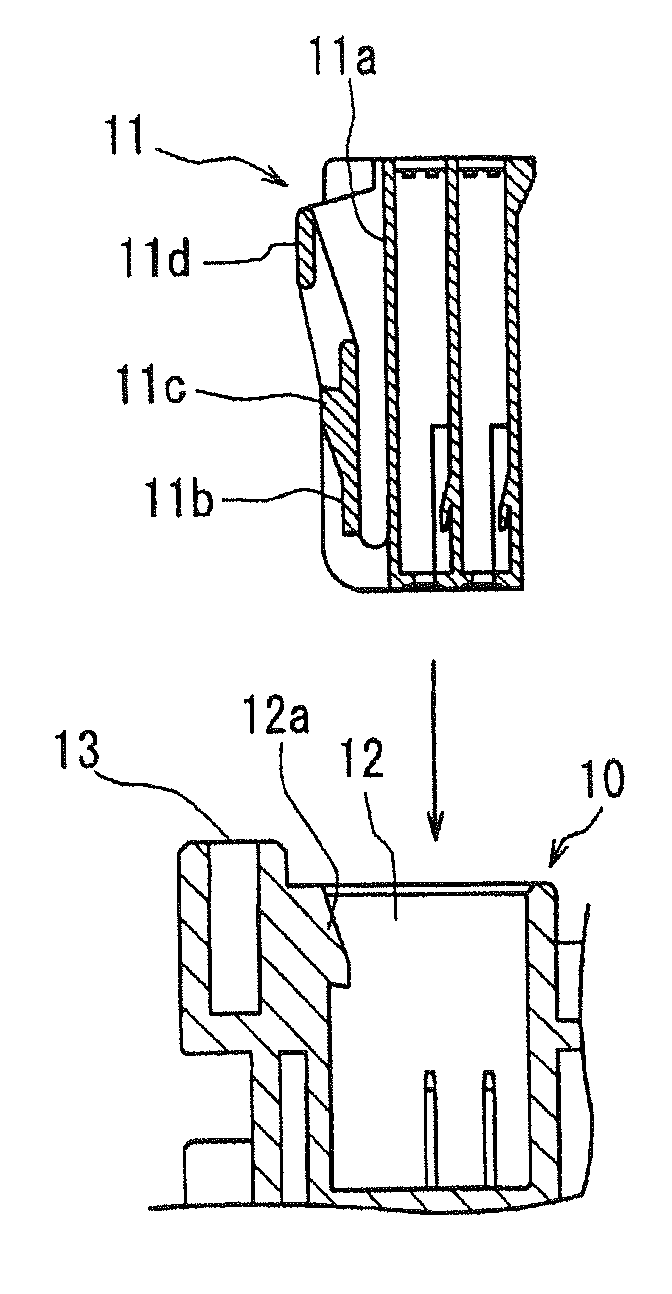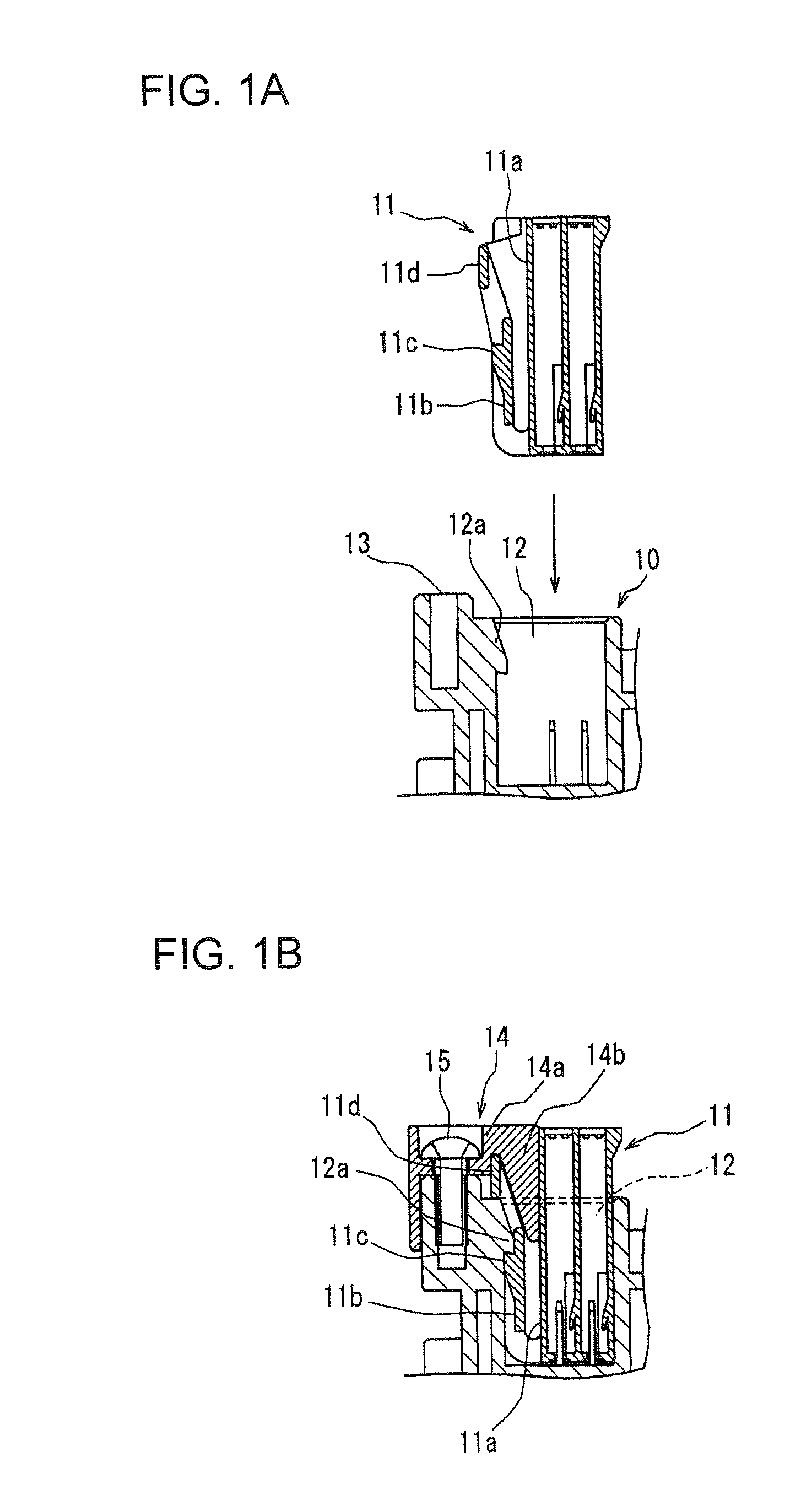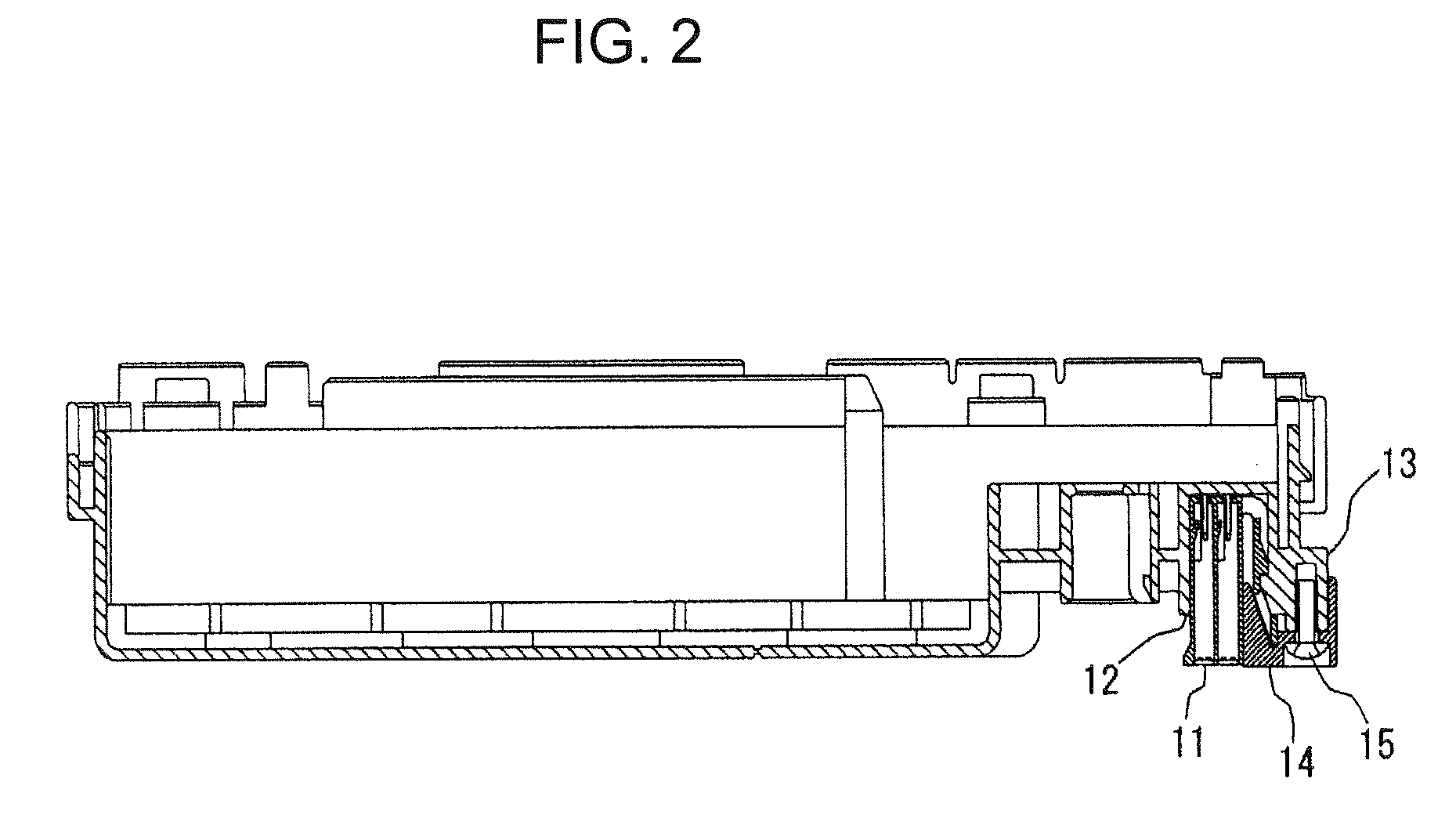Extraction preventing device for connector
- Summary
- Abstract
- Description
- Claims
- Application Information
AI Technical Summary
Benefits of technology
Problems solved by technology
Method used
Image
Examples
Embodiment Construction
[0029]Referring now to the drawings, an embodiment of an extraction preventing device for a connector in accordance with the present invention will be described below.
[0030]FIG. 1A through FIG. 3 show an embodiment of an extraction preventing device for a connector in accordance with the present invention.
[0031]A casing 10 of an electrical junction box to be installed in a motor vehicle is provided with a plurality (three in the present embodiment) of connector containing members 12 for receiving connectors 11. A receiving port of each connector containing member 12 is directed outward.
[0032]A connector latching projection 12a protrudes from an inner surface of each connector containing member 12. A piece being latched 11b that is flexible from a front end to a rear end in a connector inserting direction (a direction shown by an arrow in FIG. 1A) protrudes an housing outer surface 11a of each connector 11 to be fitted in each connector containing member 12. Each piece being latched ...
PUM
 Login to View More
Login to View More Abstract
Description
Claims
Application Information
 Login to View More
Login to View More - R&D
- Intellectual Property
- Life Sciences
- Materials
- Tech Scout
- Unparalleled Data Quality
- Higher Quality Content
- 60% Fewer Hallucinations
Browse by: Latest US Patents, China's latest patents, Technical Efficacy Thesaurus, Application Domain, Technology Topic, Popular Technical Reports.
© 2025 PatSnap. All rights reserved.Legal|Privacy policy|Modern Slavery Act Transparency Statement|Sitemap|About US| Contact US: help@patsnap.com



